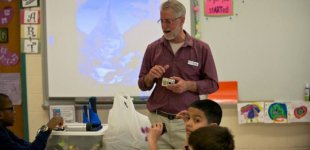
Today’s global economy is more markedly different from that of any other in history to date. With the advent of innovations such as high speed internet, video chat, and social media, and the stressed importance of the customer experience, businesses have had to adapt their business strategies in order to compete in a more thorough and effective way. In order to support that change at an organizational level, there has been an increased focus on developing and cultivating “21st century skills” that prepare students for success in the modern workplace.
So what exactly are 21st century skills? The Partnership for 21st Century Skills, a coalition of some of the top business, education and policy leaders in the U.S., has developed a “framework” to define what they believe to be the core skills necessary to be competitive in the evolving, globalized workplace.
The framework includes four basic skill sets: “Core Subjects and 21st Century Themes”, “Learning and Innovation Skills”, “Information, Media and Technology Skills”, and “Life and Career Skills”. These categories are then broken down into specific skills, such as “Global Awareness”, “Financial Literacy”, “Critical Thinking and Problem Solving”, “Information Literacy”, “Flexibility and Adaptability”, and “Creativity and Innovation”. (Partnership for 21st Century Skills' Framework for 21st Century Learning)
Infographic originally posted on http://www.p21.org/
It is clear that, though included as part of the broader 21st century skill set, it is simply not enough to rely solely on proficiencies in the traditional trifecta of reading, writing, and arithmetic. To be successful, students do need to have a solid base in these traditional core subjects, but are also expected to translate this learning beyond the classroom into “real world” experiences. In order to encourage this type of growth, students need to de-emphasize the mindset of “knowing all of the answers”, and instead focus more on nurturing problem solving skills and translating those experiences into successful and creative solutions to problems they don’t readily have the solution to.
One way to foster many of these desired characteristics and skills is by actively engaging students in the arts. It is generally accepted that a high level of participation in the arts tends to lead to increased creativity, but the arts can also be used to incorporate many other 21st century skills as well. One great example of an art form that incorporates many skills that are vital to success in any 21st century workplace is that of video game design. Video game design is a highly flexible artistic discipline which can feature many different skills ranging from the more obvious technological literacy, to the somewhat less apparent, such as environmental literacy, cross-cultural skills, and even economic skills.
In 2012, through the support of an NEA Artworks Grant, Young Audiences was able to partner with the Laguna College of Art and Design, Arts for Learning Indiana, Arts Partners Wichita, and the Center for Arts-Inspired Learning, to launch a national “Immersive Game Design” Initiative which combines the arts, science, and technology to allow students to design and create fully functional, interactive digital games that address real life problems. Young Audiences’s National Director of Education, Research, and Professional Development, Jan Norman, cites the benefits of video game design as “identifying the intention, defining what resources you have, gathering information,…[and exploring] different possibilities through this reflective process and authentic assessment…. It’s essentially the exact same process that every designer goes through and that every artist goes through and that applies to any kind of learning in life.” (Quote taken from NEA Magazine, Paulette Beete)

Additionally, in an effort to increase students’ access to learning that emphasizes the development of more complete skillsets for the 21st Century, Young Audiences created the Arts for Learning Online Curriculum, an innovative, research-based literacy program that blends the creativity and discipline of the arts with non-arts curricular objectives. Delivered by a classroom teacher who has received training from YA program staff, A4L workshops focus on a particular art form (theater, visual arts, music, or dance), and are built around one or more central texts, augmented by extended residencies led by artists of various disciplines. One of the most valuable benefits of arts integration is that it naturally encourages students to make interdisciplinary connections, and allows for a more enjoyable and ultimately, more efficient learning environment.
The competitive nature of business means that it is never standing still, and YA believes that in order for our students to remain on the forefront of a competitive global market, the way we educate these students must evolve to keep pace.
For more information about the topics discussed in 21st Century Skills for a Globalized World, click on the links below.


